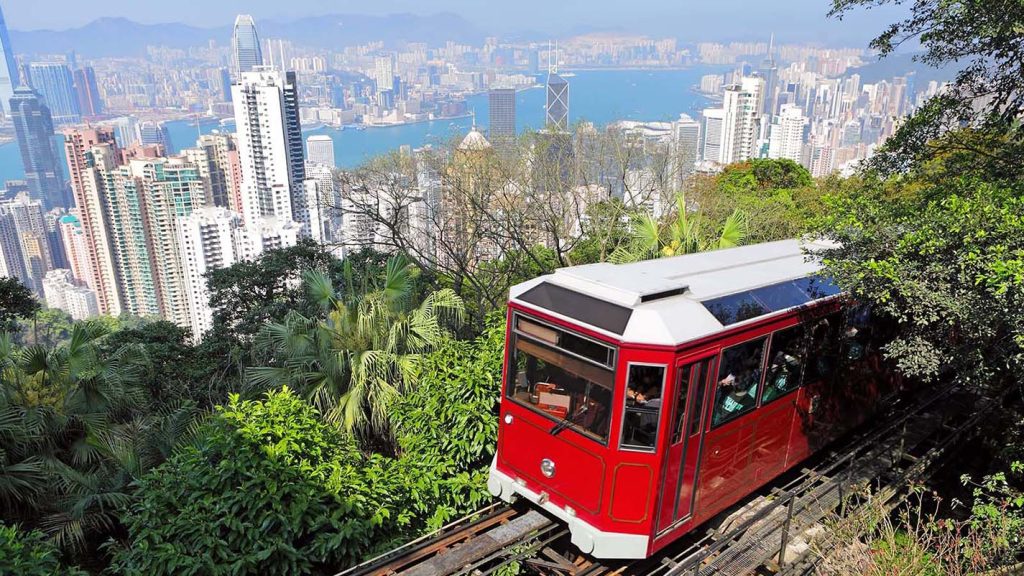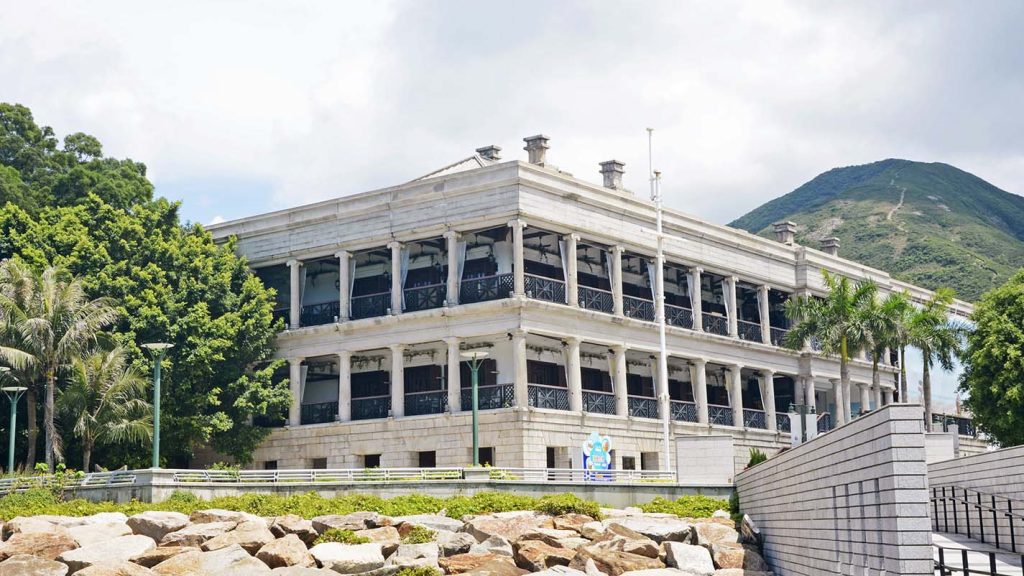My journey led me to Hong Kong, a destination teeming with a rich blend of colonial history and cultural heritage. Hong Kong’s unique fusion of Eastern and Western influences, forged over centuries of colonial rule, presents a captivating tapestry of historical landmarks and cultural gems awaiting discovery.
My Historical Quest
1. Victoria Peak
Location: Victoria Peak, Hong Kong Island
My exploration of Hong Kong’s colonial history led me to the illustrious Victoria Peak, an iconic symbol of the city’s past and present. My journey to this historical gem began with the delightful ascent aboard the Peak Tram, a railway steeped in history. The tram ride was an enchanting experience as it transported me to the summit, offering awe-inspiring vistas of the city’s skyline and the captivating harbor below.
What made this visit truly fascinating was the opportunity to immerse myself in the historical narrative surrounding The Peak. During the colonial era, this lofty enclave was the preferred residential haven for the British elite. Its elevated location provided respite from the city’s sweltering heat, along with commanding views that stretched as far as the eye could see. It was a privilege to step back in time and envision the colonial elite enjoying the same breathtaking panoramas that I was witnessing.
Pros:

Spectacular Panoramic Views: The panoramic views of Hong Kong’s cityscape and harbor from Victoria Peak are truly awe-inspiring. It’s a vantage point like no other.
Rich Historical Significance: Victoria Peak’s historical importance as a colonial-era residential hub adds depth to the experience, allowing visitors to connect with Hong Kong’s past.
Unique Peak Tram Experience: Riding the historic Peak Tram is not only a means of transport but also a delightful and unique experience in itself.
Cons:
Peak Hour Crowds: During peak tourist hours, Victoria Peak can get crowded, which may require patience and a bit of maneuvering to fully enjoy the views.
Limited Dining Options: While the summit offers dining options, they can be somewhat limited in terms of variety, so it’s advisable to plan your visit accordingly if dining is a priority.
Ticket Price: The fare for the Peak Tram varies, contingent upon the type of ticket (standard, round trip, or sky pass) and age category. Discounts are often available for children and seniors.
Getting There: Accessing Victoria Peak is a breeze, with the Peak Tram terminal situated at Garden Road, conveniently linked to various parts of Hong Kong.
2. Hong Kong Museum of History
Location: 100 Chatham Road South, Tsim Sha Tsui, Kowloon
My historical expedition led me to the illustrious Hong Kong Museum of History, a veritable treasure trove of knowledge and insights into the colonial heritage that has shaped this vibrant city. Situated in the heart of Tsim Sha Tsui, this museum offers an immersive journey through time, encompassing Hong Kong’s history from ancient times to the modern era, with a particular emphasis on the colonial period. Stepping into the museum felt like stepping into a time machine, ready to unravel the secrets of the past.
One of the most captivating aspects of the museum is its meticulous reconstruction of colonial-era streets and edifices. Walking through these faithfully recreated environments, I was transported back to the days when the colonial presence was at its zenith. From bustling streets to colonial homes, the attention to detail was astounding, offering a fascinating glimpse into the daily lives of Hong Kong’s inhabitants during that era.
Pros:
A Wealth of Historical Artifacts: The museum boasts an extensive collection of historical artifacts and exhibits that cover a wide spectrum of Hong Kong’s history, including the colonial period. It’s a paradise for history enthusiasts.
Informative Displays: The museum’s informative displays shed light on the intricacies of Hong Kong’s colonial history, making it accessible and engaging for visitors of all backgrounds.
Convenient Location: Situated in Tsim Sha Tsui, the museum’s central location makes it easily accessible, allowing visitors to incorporate it into their itineraries with ease.
Cons:
Crowded Weekends: Like many popular attractions, the museum can attract crowds, particularly on weekends. Visitors may want to plan their visit during quieter times to fully savor the experience.
Limited Interactive Exhibits: While the museum offers a wealth of information, some visitors may find that the interactive exhibits are somewhat limited in comparison to modern museum standards. However, the wealth of historical artifacts compensates for this.
Ticket Price: The museum frequently extends free admission, though separate ticket fees may apply for special exhibitions.
Getting There: Accessing the museum is a breeze via the MTR, with Tsim Sha Tsui Station in close proximity.
3. Stanley Market and Murray House
Location: Stanley, Hong Kong Island
Stanley, a quaint coastal township on Hong Kong Island, unfurled the pages of history before my eyes through its historical landmarks. Murray House, a meticulously restored colonial-era structure, now houses a medley of eateries and boutiques. It once served as a military barracks during British colonial rule. The adjacent Stanley Market, renowned for its bustling street stalls and shops, beckoned me to procure souvenirs and antiques within a historical ambience.
Pros:

A picturesque waterfront setting that exudes colonial charm.
Historical resonance embodied by Murray House.
A distinctive shopping experience awaits at Stanley Market.
Cons:
Crowds tend to throng the area, especially on weekends.
Dining options within Murray House are somewhat limited.
Ticket Price: Admission to Stanley Market is gratis, while Murray House is open to the public.
Getting There: Stanley is reachable via bus, taxi, or by embarking on a scenic bus journey along the coastline from Central.
Recommended Historical Havens
1. Flagstaff House Museum of Tea Ware
Location: 10 Cotton Tree Drive, Central, Hong Kong Island
The Flagstaff House Museum of Tea Ware, ensconced within Hong Kong Park, presents an idiosyncratic facet of the city’s colonial history via its tea culture. Housed within a beautifully preserved colonial-era edifice, the museum showcases an array of antique tea ware, unraveling the tapestry of tea consumption in colonial Hong Kong.
Pros:
An intimate museum that delves into colonial-era tea culture.
A tranquil oasis nestled within Hong Kong Park.
Educational exhibits and tea-related events enhance the experience.
Cons:
The museum’s limited space may lead to congestion during special exhibitions.
Ticket Price: The museum typically offers complimentary admission, although special exhibitions might incur separate ticket charges.
Getting There: Hong Kong Park is within convenient reach via the MTR, with Admiralty Station as the nearest stop.
2. Lantau Island and Tai O Fishing Village
Location: Lantau Island, Hong Kong
Lantau Island enfolds an abundance of historical and cultural treasures, including the picturesque Tai O Fishing Village. Here, you can explore stilt houses that have weathered generations within the local fishing community. Lantau Island also cradles the historic Po Lin Monastery and the Tian Tan Buddha, an emblem of spiritual serenity.
Pros:
A harmonious fusion of natural splendor and historical landmarks.
An intimate encounter with the traditions of the Tai O Fishing Village
Cultural and spiritual significance exemplified by Po Lin Monastery and Tian Tan Buddha.
Cons:
The journey to Lantau Island may demand time and effort, but the rewards are worth it.
Ticket Price: Various attractions on Lantau Island may have separate ticket fees, but bundled packages are often available.
Getting There: Lantau Island can be accessed by ferry from Central or via the MTR (Mass Transit Railway) from various parts of Hong Kong. The Ngong Ping 360 cable car offers a scenic route to the island.
3. Hong Kong Heritage Museum
Location: 1 Man Lam Road, Sha Tin, New Territories
The Hong Kong Heritage Museum unfolds a captivating narrative of the city’s cultural heritage, accentuating its colonial history. The museum houses a diverse array of exhibits, ranging from traditional Chinese art to historical artifacts. It provides a comprehensive overview of Hong Kong’s evolution from a humble fishing village to a global metropolis.
Pros:
A wide-ranging collection of historical artifacts and exhibits.
Informative displays that illuminate Hong Kong’s colonial history.
Family-friendly with interactive sections for all ages.
Cons:
Crowds may gather, particularly on weekends.
Dining options in the immediate vicinity are limited.
Ticket Price: The museum often grants free admission, but special exhibitions may entail separate ticket fees.
Getting There: The museum is easily accessible via the MTR, with Che Kung Temple Station serving as the nearest station.
4. Man Mo Temple
Location: 124-126 Hollywood Road, Sheung Wan, Hong Kong Island
Man Mo Temple, ensconced amidst the bustling Sheung Wan district, is a cultural jewel that beckons history aficionados. This impeccably preserved temple, dating back to the mid-19th century, venerates the Taoist deities Man Cheong (the god of literature) and Kwan Tai (the god of war). The temple’s intricate architecture, enveloped in the fragrant embrace of incense, transports visitors to a bygone era.
Pros:
Cultural and historical resonance encapsulated within its hallowed halls.
Intricately adorned interior adorned with colossal incense coils.
A serene enclave amidst the city’s urban pulse.
Cons:
Limited space may result in congestion during peak visitation times.
Ticket Price: Typically, admission to Man Mo Temple is complimentary.
Getting There: Sheung Wan is within easy reach via the MTR, with Sheung Wan Station being a short walk away from the temple.
My quest to uncover Hong Kong’s colonial legacy and cultural treasures was a gratifying expedition that afforded me a profound insight into this dynamic city. The historical sites I explored, including Victoria Peak, the Hong Kong Museum of History, and Stanley Market, allowed me to forge a personal connection with Hong Kong’s illustrious history.
Moreover, the recommended sites, such as the Flagstaff House Museum of Tea Ware, Lantau Island, Tai O Fishing Village, the Hong Kong Heritage Museum, and Man Mo Temple, enriched my understanding of Hong Kong’s heritage. Each of these destinations provided a distinct perspective, further enhancing my admiration for Hong Kong’s historical tapestry.
One of the most remarkable aspects of this journey was witnessing how Hong Kong adeptly preserves and integrates its colonial history into its contemporary identity. The coexistence of historical landmarks within the bustling urban landscape showcases the city’s ability to embrace its past while forging ahead into the future.
Hong Kong’s colonial history and cultural heritage are integral facets of its identity. Delving into these aspects not only deepens one’s appreciation of Hong Kong but also fosters a profound connection with its vibrant culture. Whether you are a history enthusiast or simply curious about the city’s past, Hong Kong’s historical sites beckon with myriad tales to tell.